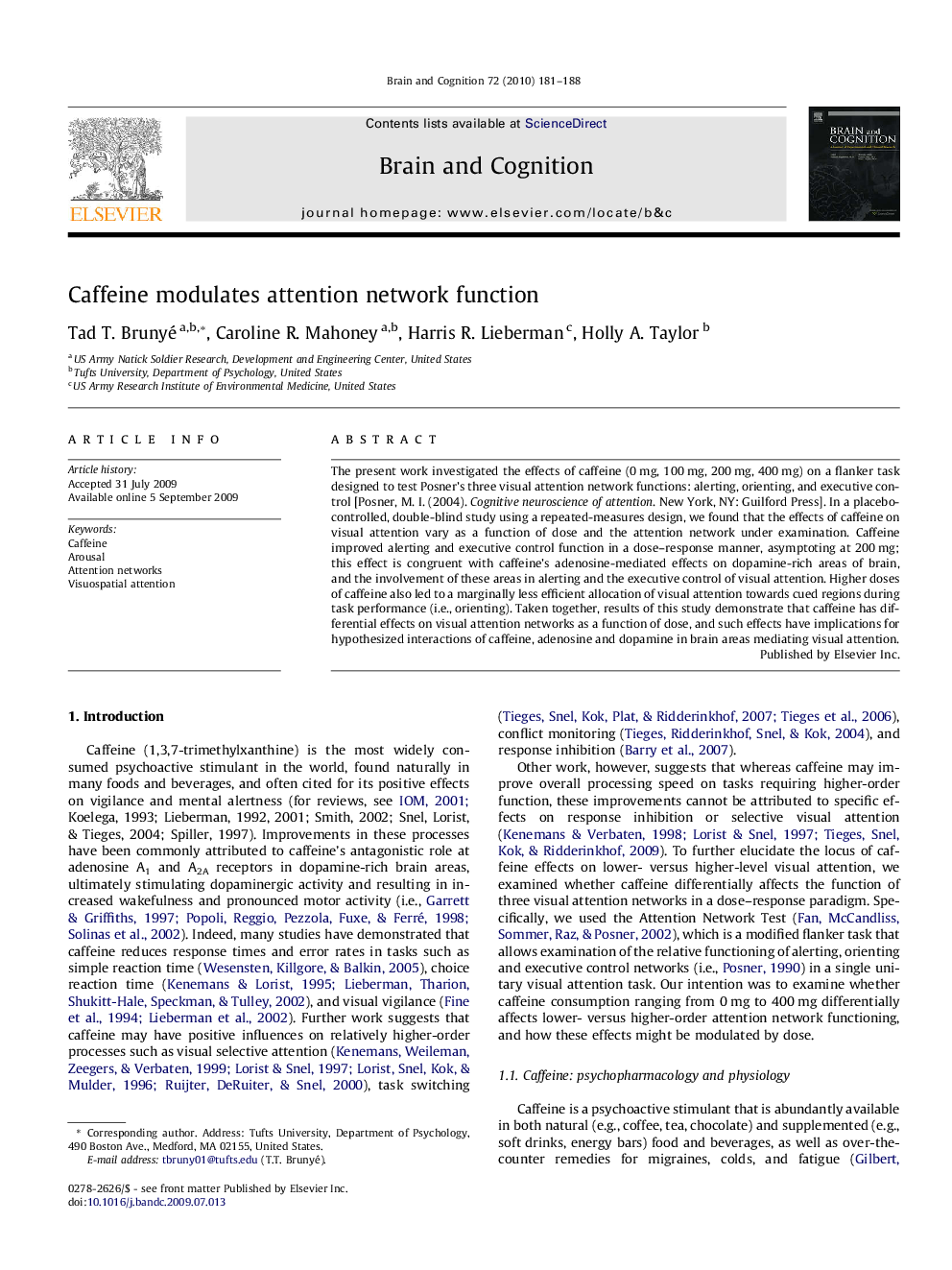| Article ID | Journal | Published Year | Pages | File Type |
|---|---|---|---|---|
| 924775 | Brain and Cognition | 2010 | 8 Pages |
The present work investigated the effects of caffeine (0 mg, 100 mg, 200 mg, 400 mg) on a flanker task designed to test Posner’s three visual attention network functions: alerting, orienting, and executive control [Posner, M. I. (2004). Cognitive neuroscience of attention. New York, NY: Guilford Press]. In a placebo-controlled, double-blind study using a repeated-measures design, we found that the effects of caffeine on visual attention vary as a function of dose and the attention network under examination. Caffeine improved alerting and executive control function in a dose–response manner, asymptoting at 200 mg; this effect is congruent with caffeine’s adenosine-mediated effects on dopamine-rich areas of brain, and the involvement of these areas in alerting and the executive control of visual attention. Higher doses of caffeine also led to a marginally less efficient allocation of visual attention towards cued regions during task performance (i.e., orienting). Taken together, results of this study demonstrate that caffeine has differential effects on visual attention networks as a function of dose, and such effects have implications for hypothesized interactions of caffeine, adenosine and dopamine in brain areas mediating visual attention.
